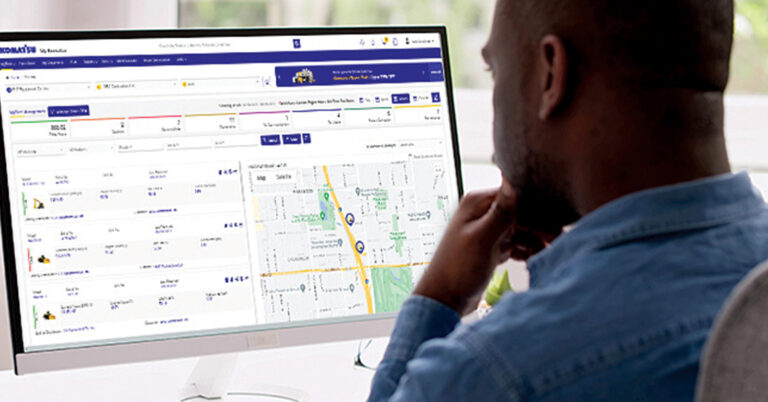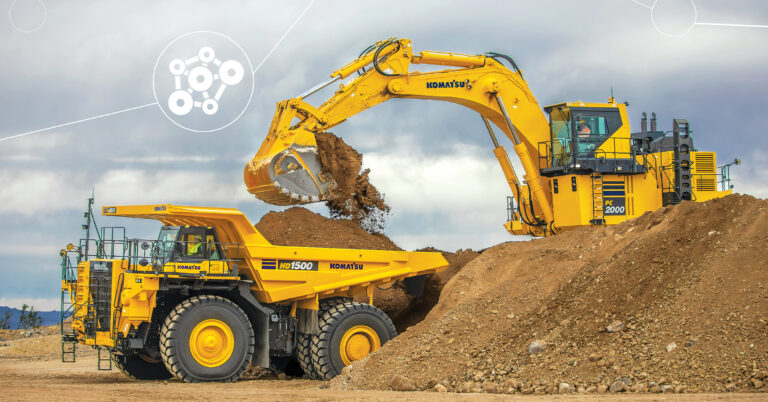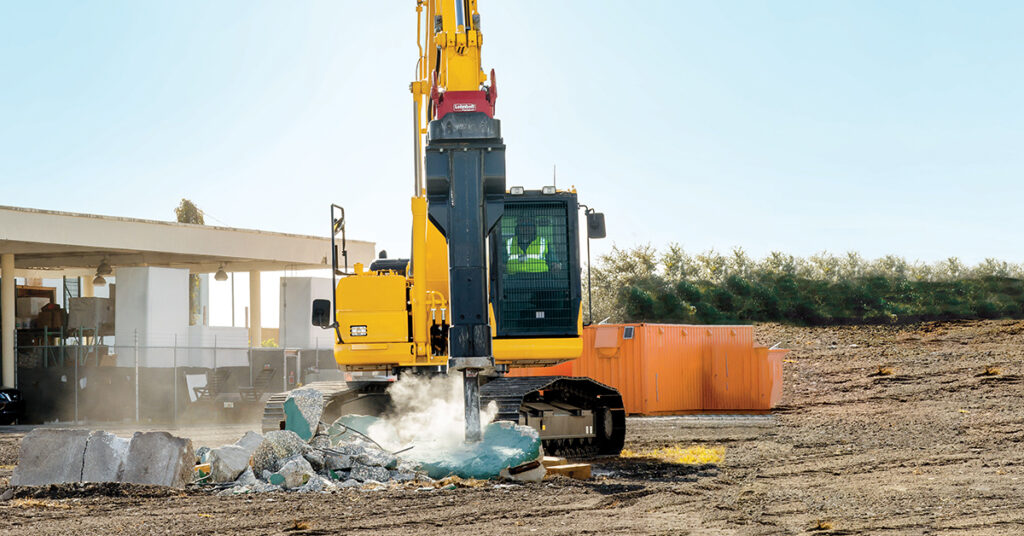
Considering a hydraulic breaker? Here are some tips for finding the best one for the job
Hydraulic breakers for excavators were introduced a little more than 50 years ago. They soon gained popularity because they added versatility – and greater profitability – to what was previously a one-dimensional machine. In addition to digging, operators could now hammer rock, break up pavement and perform demolition.
During the past five-plus decades, the number of breakers introduced to the marketplace continued to grow. There are numerous models and types today. Choosing the right one takes careful consideration to ensure optimal production and efficiency.
“There are several variables that should be taken into account when choosing a breaker; it’s definitely not a one-size-fits-all deal,” said Eric Chudzik, District Manager of the Komatsu North America Attachments Division. “The first consideration is looking at what model of machines you have available. Next, you have to look for a breaker size that will tie into the type of material you want to break – is it hard rock, concrete or both? What is the application? What type of production do you want to achieve? Purchase price should also be a factor in choosing a breaker.”
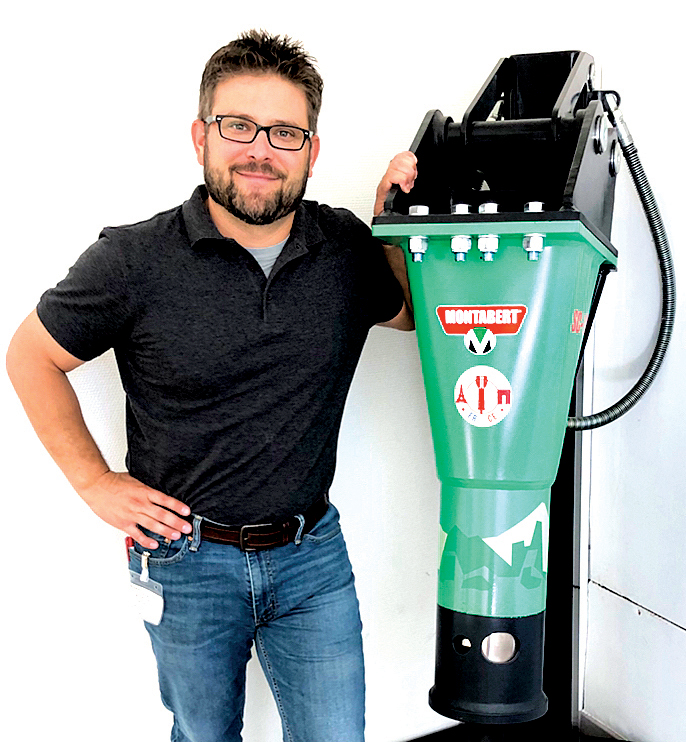

“If you encounter rock on a daily, or near-daily, basis, buying makes perfect sense,” said Aaron Scarfia, Regional Manager of the Komatsu North America Attachments Division. “If your projects are in areas where you only run into rock occasionally or not at all, then rental is the way to go. However, you may also do a lot of demolition. In that case, making the investment in a purchase could be justified.”
Chudzik added that the type of demolition you perform should factor into which breaker you need. “Bridge decks and abutments, roadways, curb and gutter, and heavy foundations are all different. If you choose one for curb and gutter and try to use it for heavy foundations, the production is likely to be disappointing. Think about how much you do in this segment, what you’re breaking and match the attachment to the machine and tasks.”
To help you choose the right breaker and be most productive with it, Komatsu has a dedicated attachments sales and service team to support both you and your distributor. The specialists are factory trained and experienced in installation, operation, service and rebuilds, noted Scarfia.
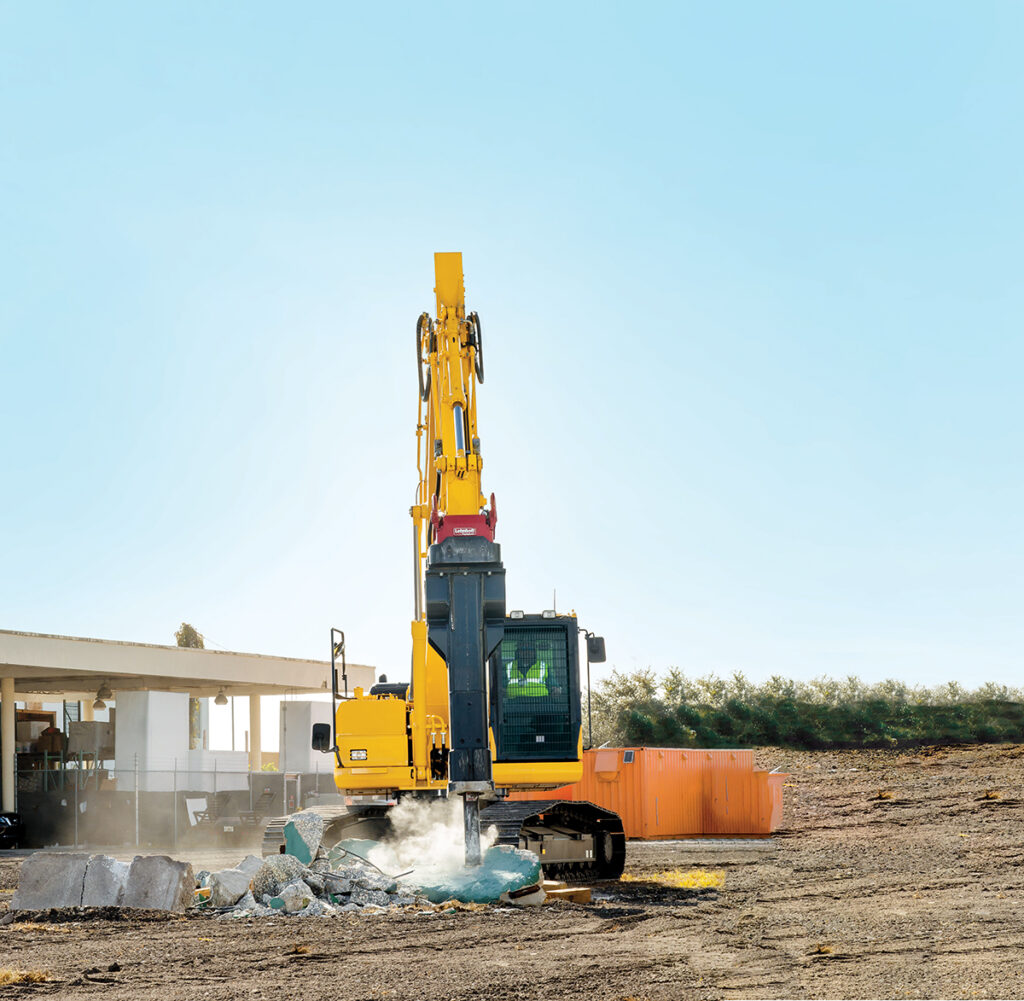
New breakers that match
Komatsu recently introduced its initial line of branded breakers. The product offering includes the JTHB-G (Gas) series dual-energy type and the JMHB-H (Hydraulic) series with eight models in each series. All are designed and tested to fit Komatsu excavators from the PC78US-11 to the PC490LC-11 models. Their high-percussion efficiency and unique variable energy technology provide high production in multiple applications, said Scarfia.
“Komatsu breakers are specifically paired to a machine size. The model numbers of the breakers and the machines match, so that you can easily identify the right attachment for your excavator,” explained Scarfia. “They are approved for each model to use in breaker mode – which is single-direction hydraulics with hydraulic fluid traveling from the control valve to the attachment and back to the source. That makes them very efficient for your machine.”
Komatsu built in several features and benefits to protect the breaker, carrier and operator. “Komatsu breakers have an accumulator that recycles high-pressure oil internally, reducing hydraulic surges returning back to the carrier,” Chudzik said, noting that some other manufacturers do not include this feature. “That allows us to create more energy with a lower flow. It also reduces hydraulic pressure spikes leaving the breaker, protecting the hydraulic system of the carrier.”
Blank fire protection reduces firing when the tool is not in contact with material being broken. This system reduces misfires, increasing the longevity of the hammer while allowing the operator to concentrate on the job.
“Automatic pressure regulation keeps the breaker operating at a constant operating pressure to ensure consistent energy and peak performance,” said Chudzik. “Also included are suspensions that reduce vibration going back to the carrier and operator; fully enclosed ‘soundproof’ cradles and housing that reduce noise; and the breaker packages feature automatic greasing for ease of maintenance.”
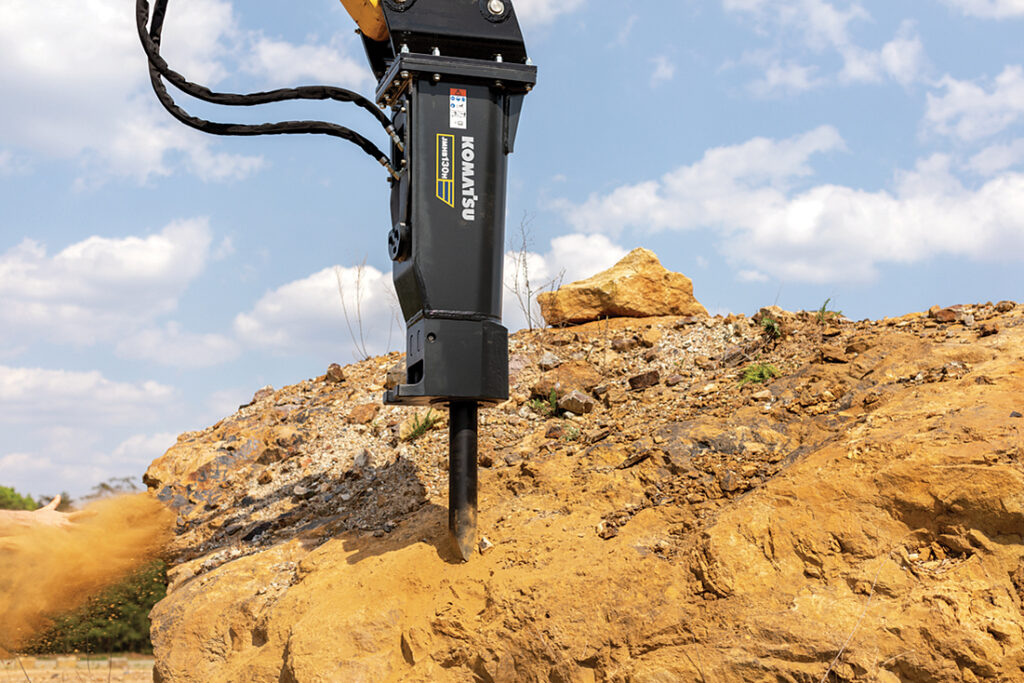
Rebuild periodically for longer life
How you use the breaker and maintain it factor into its useful life, according to Chudzik. He’s seen breakers that needed to be replaced within two years due to neglect and some that have lasted more than two decades thanks to diligent servicing.
“The user is a key component, not only in production but also in longevity,” said Chudzik. “They should be well-trained in how to avoid blank firing and how not to use the breaker for prying as that will prematurely wear out the bushings and break working tools. If you treat it right with proper maintenance and rebuilds when required, it may last for 10, 20 years or longer.”
Scarfia noted that Komatsu has a rebuild program. “For a flat rate, we provide the labor and genuine parts to repair the breakers. This service is offered through our distributors and our dedicated breaker repair center with factory trained technicians. If you adhere to the recommended maintenance schedule, an extended warranty is possible. New breakers come with a standard 12-month warranty.
“If you think a breaker is the right tool to add versatility to your business or if you want to check out our new line, we encourage you to contact your local Komatsu distributor for more information or to set up a demonstration,” Scarfia added.

